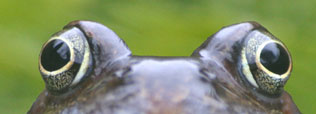Sparrowhawk - Accipiter nisus
Adult males have a slate grey back and white underparts, closely barred with orange. Females are larger, with brown upperparts, a white stripe over the eye and dark barring underneath.
Woodlands, along hedgerows and in parks and gardens.
All year round
Their broad, rounded wings and long tail are adapted for flying between trunks and branches enabling them to weave in and out of trees at high speed to catch their prey of small birds. They often catch their prey by surprise, suddenly dashing over a hedge and frequently take birds from garden feeders. The breed in woodland trees, often using an old wood pigeon nest as a base.
As with some other birds of prey, Sparrowhawks will often shield their prey with their wings from other predators - known as mantling.
Widespread and fairly common in Britain
Once rare as the population crashed due to DDT poisoning, the Sparrowhawk is now common and widespread and frequently seen in urban areas.
Leicestershire & Rutland Map
Enter a town or village to see local records
MAP KEY:
Yellow squares = NBN records (all known data)
Coloured circles = NatureSpot records: 2025+ | 2020-2024 | pre-2020
UK Map
Species profile
- Common names
- Sparrowhawk, Eurasian Sparrowhawk
- Species group:
- Birds
- Kingdom:
- Animalia
- Order:
- Falconiformes
- Family:
- Accipitridae
- Records on NatureSpot:
- 984
- First record:
- 01/01/1985 (LROS)
- Last record:
- 31/05/2025 (Pugh, Dylan)
Total records by month
% of records within its species group
10km squares with records
The latest images and records displayed below include those awaiting verification checks so we cannot guarantee that every identification is correct. Once accepted, the record displays a green tick.
In the Latest Records section, click on the header to sort A-Z, and again to sort Z-A. Use the header boxes to filter the list.



















